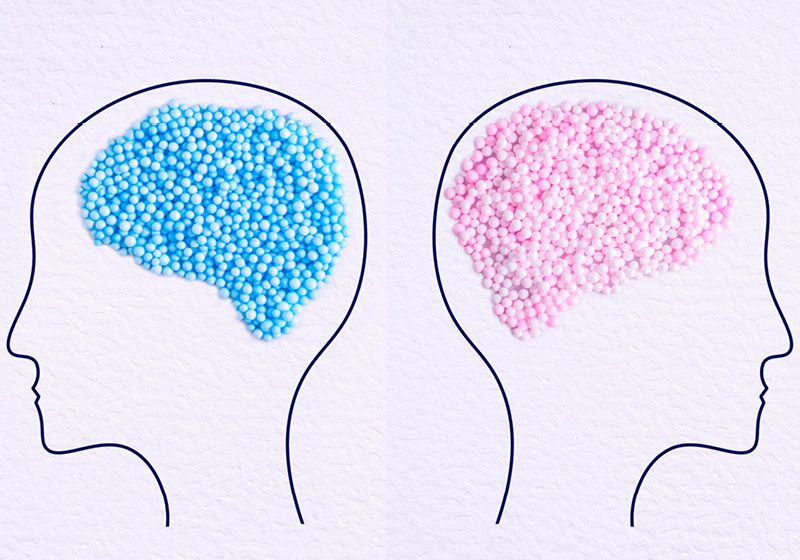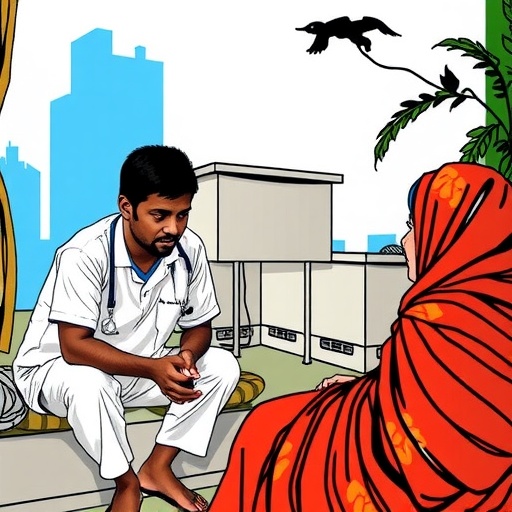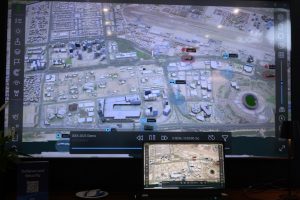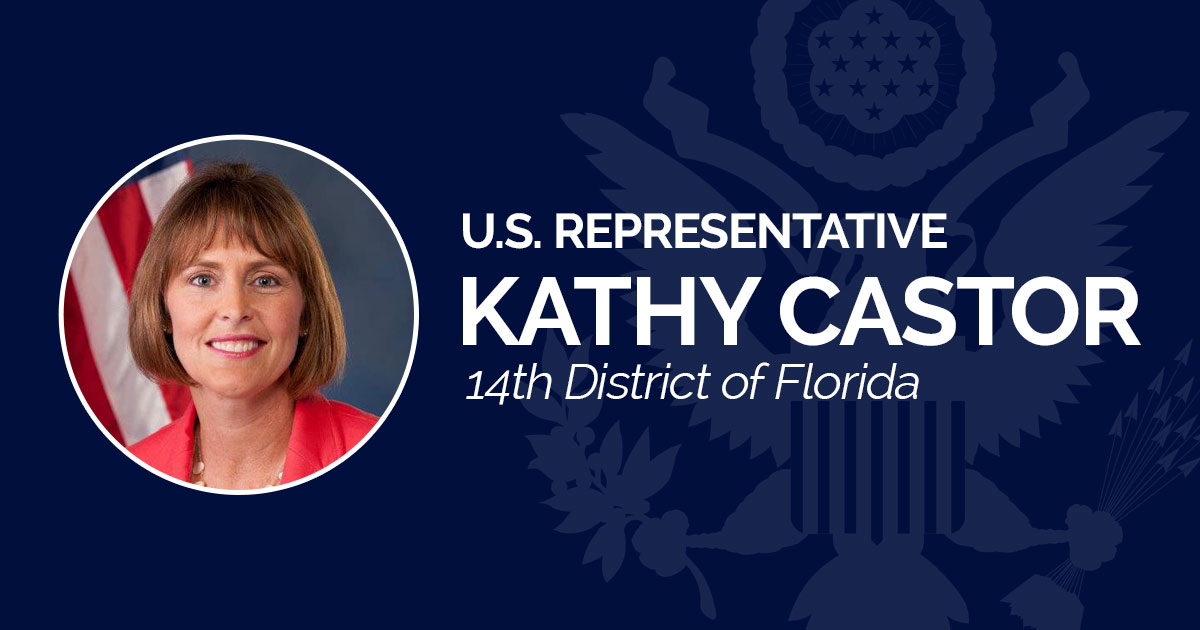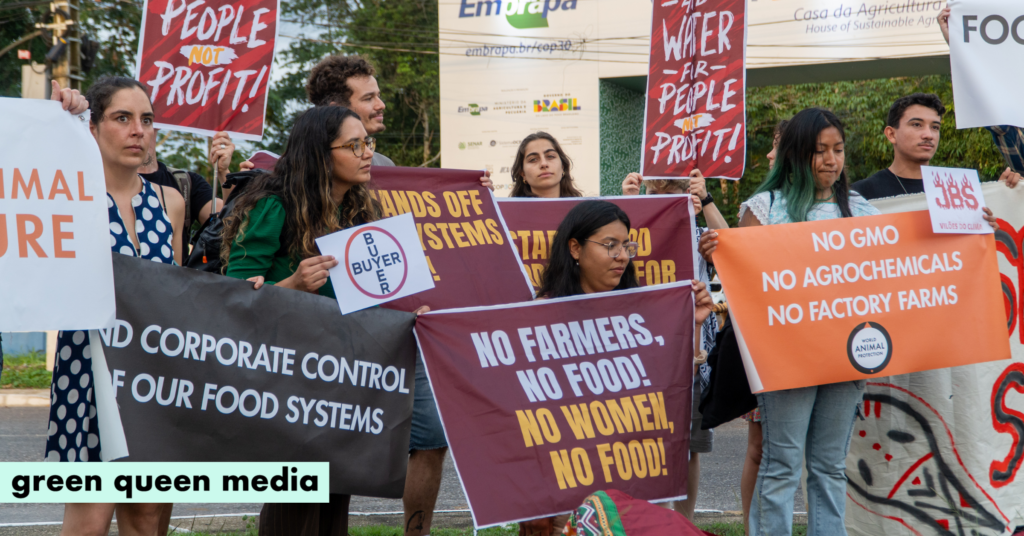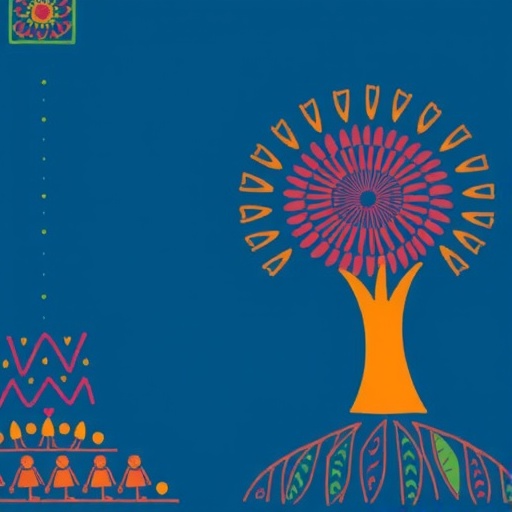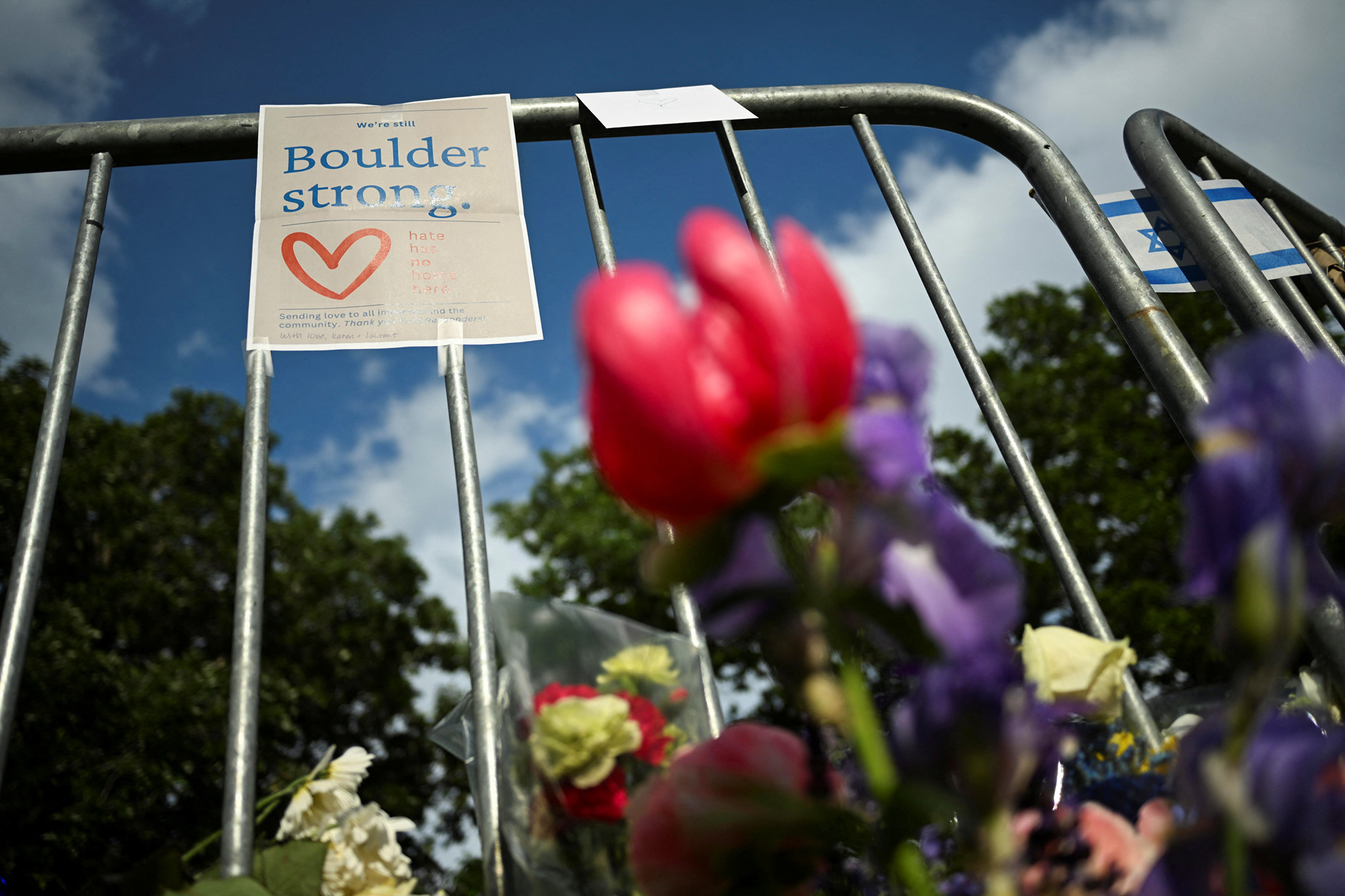Suspected gunmen go on trial in Moscow over concert hall terror attack – The Guardian

Report on Moscow Concert Hall Attack Trial and its Implications for Sustainable Development Goals
Incident Summary and Legal Proceedings
A trial commenced in Moscow for nineteen individuals, including four primary suspects, in connection with the terrorist attack on the Crocus City Hall on March 22 of the previous year. The attack resulted in 149 fatalities and hundreds of injuries. The key details of the incident and subsequent legal actions are as follows:
- The Attack: Four armed individuals reportedly stormed the concert venue, initiating gunfire and subsequently setting the building on fire. A significant portion of the fatalities resulted from smoke and carbon monoxide inhalation.
- Responsibility: The Islamic State affiliate, Isis-K, claimed responsibility. The Russian Federation has alleged, without presenting evidence, that the attack was conducted in the interests of Ukraine.
- The Accused: The four suspected gunmen are identified as nationals of Tajikistan. An additional 15 individuals are accused of being accomplices.
- Legal Forum: The case is being heard in a military court behind closed doors, with further hearings scheduled.
Analysis in the Context of SDG 16: Peace, Justice and Strong Institutions
The attack and its aftermath directly challenge the core tenets of SDG 16, which aims to promote peaceful and inclusive societies, provide access to justice for all, and build effective, accountable, and inclusive institutions at all levels.
- Peace and Security (Target 16.1): The terrorist act is a fundamental violation of peace and security, significantly increasing the mortality rate due to violence.
- Justice and Rule of Law (Target 16.3): While the trial represents a formal process of justice, serious concerns have been raised. Human rights organizations have noted clear evidence of torture inflicted upon the suspects upon their arrest, undermining the principles of due process and the rule of law. The closed-door nature of the military trial further limits transparency and public accountability.
- Institutional Effectiveness (Target 16.6): The event is widely considered a significant failure of national security institutions. Reports indicate that Western intelligence agencies had provided warnings of an imminent attack, which were publicly dismissed by Russian leadership. This suggests a potential weakness in institutional capacity to prevent and respond to violent threats, possibly due to a strategic focus on other geopolitical matters.
Socio-Economic Factors and SDG 10: Reduced Inequalities
The incident highlights profound issues related to inequality, both between and within countries, as outlined in SDG 10.
- Migrant Vulnerability (Target 10.7): The alleged perpetrators were identified as migrant workers from Tajikistan, having left conditions of poverty and unemployment in search of economic opportunities in Russia. This underscores the vulnerabilities of migrants who seek orderly, safe, and regular migration pathways.
- Increased Discrimination: The attack has reportedly triggered a significant rise in anti-migrant sentiment and xenophobia within Russia. This has manifested in:
- Increased police searches and arrests targeting Central Asian migrants.
- Reports of forcible conscription of migrants into the Russian military.
These outcomes directly contravene the goal of reducing inequalities by fostering discrimination and marginalizing an already vulnerable population.
Intersections with Other Key Sustainable Development Goals
The consequences of the attack extend across several other SDGs, demonstrating the interconnected nature of development challenges.
- SDG 3 (Good Health and Well-being): The attack caused mass casualties and injuries, representing a severe public health crisis. The psychological trauma for survivors and the broader community constitutes a long-term challenge to well-being.
- SDG 8 (Decent Work and Economic Growth): The case of the suspects, who were migrant workers reportedly radicalized, points to the precarious conditions and lack of social protections often faced by migrant labor forces, which can create susceptibility to exploitation and extremism.
- SDG 11 (Sustainable Cities and Communities): The targeting of a large public gathering place directly undermines the objective of making cities and human settlements inclusive, safe, and resilient. Such events erode public safety and social cohesion within urban communities.
SDGs Addressed in the Article
SDG 16: Peace, Justice and Strong Institutions
- The article’s central theme is a terrorist attack that “claimed 149 lives,” directly opposing the goal of peaceful and inclusive societies.
- It discusses the justice system, noting that “Nineteen people… went on trial,” but also highlights severe issues such as suspects showing “clear signs of torture,” which undermines the rule of law.
- The text points to institutional weakness, describing the attack as a “catastrophic security failure” because security services were “distracted by the war in Ukraine.”
SDG 10: Reduced Inequalities
- The article highlights discrimination based on national origin. Following the attack, it notes a “new wave of anti-migrant sentiment across Russia, with central Asian migrants increasingly being subjected to police searches and arrests.”
- It touches upon the vulnerability of migrants, who are not only facing discrimination but are also, in some cases, “forcibly conscripted to fight for Russia in Ukraine.”
SDG 8: Decent Work and Economic Growth
- The article provides context on the economic drivers of migration, stating that the Tajik suspects were part of a larger group of “migrants who have left the poverty and unemployment of their home towns and villages in search of a better future in Russia.” This points to a lack of decent work opportunities in their country of origin.
- The mention of migrants being “forcibly conscripted” represents a severe violation of labor rights and a failure to provide a safe working environment.
SDG 3: Good Health and Well-being
- The direct consequence of the violence was the death of 149 people and the injury of “hundreds of people,” which is a clear setback for ensuring healthy lives and well-being.
SDG 11: Sustainable Cities and Communities
- The attack targeted a public space, the “Crocus City Hall,” during a large gathering. This event undermines the goal of making cities and public spaces safe and inclusive for all residents.
Specific SDG Targets Identified
SDG 16: Peace, Justice and Strong Institutions
- Target 16.1: Significantly reduce all forms of violence and related death rates everywhere. The article’s focus on the terrorist attack that “claimed 149 lives” and injured hundreds directly relates to this target.
- Target 16.3: Promote the rule of law at the national and international levels and ensure equal access to justice for all. The trial of the suspects is relevant, but the report that suspects showed “clear signs of torture” and that one had his ear “sliced off and forced into his mouth” demonstrates a failure to uphold the rule of law.
- Target 16.a: Strengthen relevant national institutions… to prevent violence and combat terrorism and crime. The article explicitly points to a failure in this area, calling the attack a “catastrophic security failure” and noting that Russia’s security services ignored warnings from Western intelligence agencies.
SDG 10: Reduced Inequalities
- Target 10.2: By 2030, empower and promote the social, economic and political inclusion of all, irrespective of age, sex, disability, race, ethnicity, origin, religion or economic or other status. The article describes the opposite outcome, with a “new wave of anti-migrant sentiment” and Central Asian migrants being subjected to “police searches and arrests,” indicating increased exclusion based on origin.
- Target 10.7: Facilitate orderly, safe, regular and responsible migration and mobility of people… The situation of Tajik migrants, who leave due to “poverty and unemployment” only to face discrimination and forced conscription, points to a system of migration that is unsafe and irresponsible.
SDG 8: Decent Work and Economic Growth
- Target 8.5: By 2030, achieve full and productive employment and decent work for all… The article implies a lack of progress toward this target in the migrants’ home country, as they left due to “poverty and unemployment.”
- Target 8.8: Protect labour rights and promote safe and secure working environments for all workers, including migrant workers… The report that migrants are being “forcibly conscripted to fight for Russia in Ukraine” is a direct and extreme violation of this target.
Indicators for Measuring Progress
SDG 16: Peace, Justice and Strong Institutions
- Indicator 16.1.1 (Number of victims of intentional homicide): The article provides a direct data point for this indicator by stating the attack “claimed 149 lives.”
- Implied Indicator (Incidents of torture): Progress towards Target 16.3 can be negatively measured by reports of torture. The article explicitly mentions that “human rights groups have criticised Russia’s treatment of the suspects” and describes “clear signs of torture,” providing qualitative evidence for this indicator.
SDG 10: Reduced Inequalities
- Implied Indicator (Reports of discrimination against migrants): The article provides evidence for this by stating that “central Asian migrants increasingly being subjected to police searches and arrests,” which serves as a measure of discrimination based on national origin.
SDG 8: Decent Work and Economic Growth
- Implied Indicator (Incidents of forced labour): The report of migrants being “forcibly conscripted to fight for Russia in Ukraine” is a clear data point for measuring violations of labor rights, specifically forced labor (Indicator 8.7.1).
- Implied Indicator (Unemployment as a driver of migration): The article’s statement that migrants left their home towns due to “poverty and unemployment” implies that unemployment rates in the country of origin are a relevant indicator for understanding migration pressures related to Target 8.5.
SDG 3: Good Health and Well-being
- Indicator 3.d.1 (International Health Regulations (IHR) capacity and health emergency preparedness): While not directly named, the “catastrophic security failure” and the fact that “nearly half of the victims were killed by smoke and carbon monoxide inhalation from the fire” points to failures in emergency response and preparedness. The number of deaths (149) and injuries (“hundreds”) serve as direct outcome measures of this failure.
Summary Table of SDGs, Targets, and Indicators
| SDGs | Targets | Indicators Identified in the Article |
|---|---|---|
| SDG 16: Peace, Justice and Strong Institutions | 16.1: Reduce all forms of violence and related death rates. | Number of deaths from the violent attack (149). |
| SDG 16: Peace, Justice and Strong Institutions | 16.3: Promote the rule of law and ensure equal access to justice. | Reports of suspects showing “clear signs of torture.” |
| SDG 16: Peace, Justice and Strong Institutions | 16.a: Strengthen national institutions to prevent violence and combat terrorism. | Mention of a “catastrophic security failure” and ignoring intelligence warnings. |
| SDG 10: Reduced Inequalities | 10.2: Promote social, economic and political inclusion of all, irrespective of origin. | Reports of a “new wave of anti-migrant sentiment” and targeted police searches and arrests. |
| SDG 10: Reduced Inequalities | 10.7: Facilitate orderly, safe, regular and responsible migration. | Migrants facing discrimination and forced conscription after fleeing poverty. |
| SDG 8: Decent Work and Economic Growth | 8.8: Protect labour rights and promote safe and secure working environments for migrant workers. | Reports of migrants being “forcibly conscripted to fight for Russia in Ukraine.” |
| SDG 3: Good Health and Well-being | General aim to reduce preventable deaths and injuries. | Number of deaths (149) and injuries (“hundreds”) from the attack. |
| SDG 11: Sustainable Cities and Communities | 11.7: Provide universal access to safe and inclusive public spaces. | A violent attack targeting a public concert hall. |
Source: theguardian.com

What is Your Reaction?
 Like
0
Like
0
 Dislike
0
Dislike
0
 Love
0
Love
0
 Funny
0
Funny
0
 Angry
0
Angry
0
 Sad
0
Sad
0
 Wow
0
Wow
0












